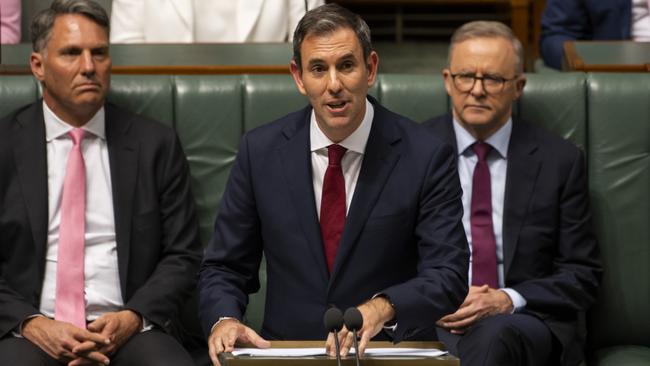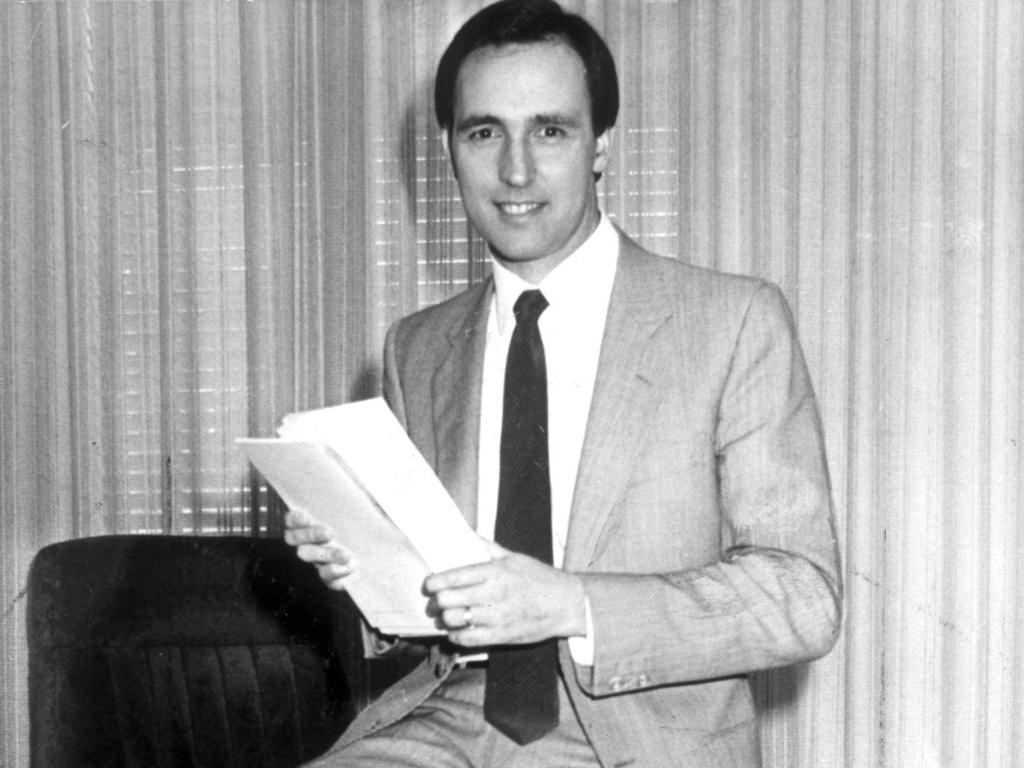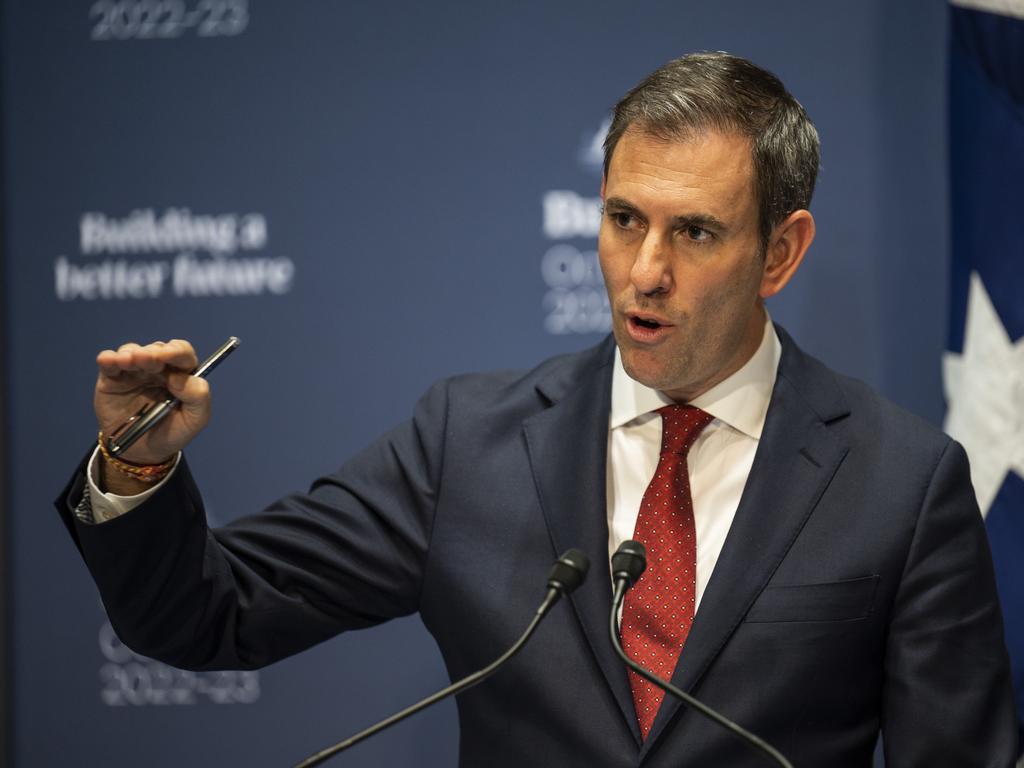
The first budget by Jim Chalmers is responsible as far as it goes – but it doesn’t go far. “There are hard days to come and hard decisions to accompany them,” the Treasurer said at the conclusion of his speech.
The “safety-first” small target agenda on which Labor won the election is trashed. This budget outlines a transformed world. The Albanese government confronts “make or break” electoral decisions – they can be deferred but they cannot be avoided.
This is an unusual opening budget for a new government – politically safe, modest in decisions, faithful to its election mandate but strangely silent on Labor’s response to the sweeping medium-term challenges it documents that now face Australia.
Labor’s values and the budget’s logic point to significant increases in the overall tax burden down the track. At the same time, spending must be seriously curtailed. The budget situation over the decade remains unsustainable while the short-term inflation risk is perilous. Labor cannot honour its election promise to solve cost-of-living pressures.
The forecasts are dire. Labor governs at a time of high economic adversity. The public should prepare itself for much tougher times.
Inflation will peak at 7.75 per cent but last longer than previously expected; electricity prices will rise 20 per cent in late 2022 and another 30 per cent in 2023-24; gas prices will rise 20 per cent in both years; economic growth will be downgraded to 1.5 per cent in 2023-24; interest rates will rise further; real wages will be negative till 2024; unemployment will rise; and the budget deficit will deteriorate significantly over the decade to finish at 1.9 per cent of GDP compared with 1.5 per cent in the current year.
Chalmers says the budget “begins” to put things right but, in truth, these are baby steps. Is Labor spooked? Maybe. Certainly it hasn’t formulated a medium-term strategy. Questioned on whether future budgets would repair the deficit largely on the spending or tax side, the Treasurer replied: “To be determined.”
The budget is conspicuous for defining the problem yet unsure in signalling the solution. Labor faces another historic policy challenge in office to a generational crisis. Chalmers knows the task – he grasps the challenge but bringing the government to answers is a herculean job.
This is a disciplined budget, but not as disciplined as Labor says. The budget shows net government decisions weakened the bottom line by $9.782bn across the four years of forward estimates. Yes, weakened the bottom line, not improved it. The chasm between future spending and tax receipts across the decade remains vast, running at a difference of $50bn annually to repair the deficit, a structural deficit of about 2 per cent of GDP. The upshot is Treasury in the budget papers sends three big warnings.
The rises in energy prices are untenable as inflation drivers (let alone as electoral threats), the signal being that more robust energy interventions are needed to restrain prices – witness the gas debate; a morally agonising debate about out-of-control NDIS spending cannot be avoided, a nightmare collision between the claims of the disability sector and taxpayer responsibility; and by the decade’s end, the biggest single payments burden comes from interest on debt – but that can’t be controlled, hence the need to confront what can be controlled.
Is this budget a lost opportunity? The assumption that next May the government will emerge with a bold agenda in its second budget having been gun shy in its first will strain the credence of many people. Chalmers must engage in “act of faith” politics.
As a gifted communicator he must persuade that the budget’s policy steps are just the opening moves in a long, transforming policy journey. Chalmers was keen to avoid any sense of a sudden “crash through” reform agenda at his first outing. That has been achieved.
But Labor’s credibility is going to be questioned.
Chalmers can say the budget inaugurates new political benchmarks for Labor. He has reorientated the government away from a growth economy that no longer exists. He has begun to introduce spending saves into the budget process, assisted by slashing Coalition programs. Labor identified $28.5bn in budget improvements over four years to 2025-26.
The Treasurer shunned new cost-of-living protections, largely sticking by the rule the inflation threat meant new spending had to be minimised.
Labor has constructed as a political necessity a cost-of-living relief agenda – it includes cheaper childcare, cutting medicine costs, expanding the paid parental leave scheme, delivering more affordable housing and intervening to boost wages for low paid workers.
The overwhelming bulk of the revenue surge is taken to the bottom line. Chalmers said 99 per cent was returned to the budget over the next two years, which improves the bottom line before it deteriorates again.
The deficit for 2022-23 is now forecast to be $36.9bn, an improvement of a hefty $41.1bn.
Chalmers warns this gain is temporary and “the profound and permanent spending pressures on the budget are forecast to grow and grow”. He envisages a likely four budgets in Labor’s opening parliamentary term with the budget papers predicting “spending restraint” as the term unfolds.
The sheer extent of the budget dilemma is revealed by the cash deficit projection at 2032-33 – in the last Frydenberg budget this was to be 0.7 per cent of GDP; in the Chalmers budget it is projected to be 1.9 per cent of GDP.
There will be a universal mood engendered by this budget – the sense hard work has just begun, the belief that economic growth falling to 1.5 per cent is a perilous moment and a conviction Labor must increase the tempo, content and urgency of its reform agenda.
This budget has deferred the big decisions but the time for kicking the can down the road is done.
Labor has got to stand tall from this point, otherwise it will fade out of office.







This is a cautious, unambitious budget that highlights Australia’s grim economic challenges but, apart from fulfilling campaign policies, offers no medium-term strategy for the future.